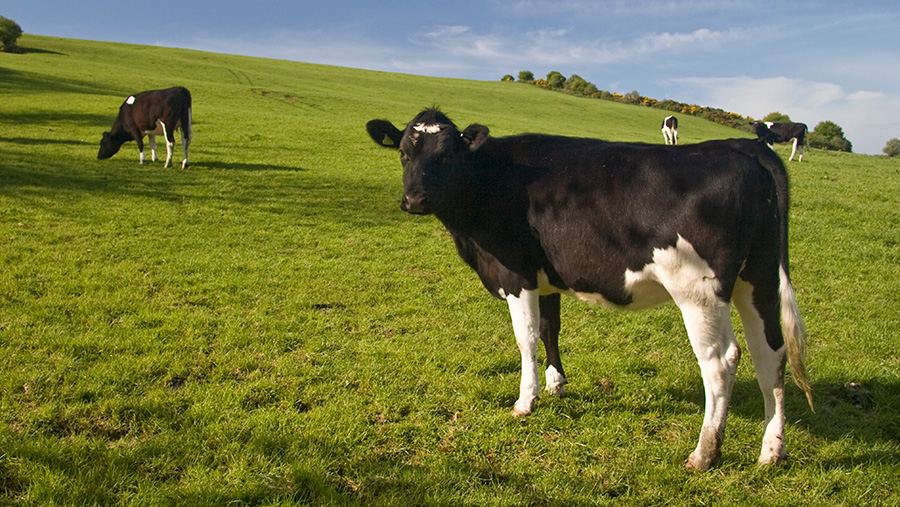Performance data shows gap between best and worst NI farms
 © Nicholas and Sherry Lu Aldridge/FLPA/Imagebroker/Rex/Shutterstock
© Nicholas and Sherry Lu Aldridge/FLPA/Imagebroker/Rex/Shutterstock A significant gap remains between the best and worst-performing farms in Northern Ireland, according to official figures.
The government has released farm performance indicators for 2015-16, which are based on the farm accounts from 360 farms supplying data to the Farm Business Survey.
The report presents a gross margin per head or per hectare, excluding subsidies, for each enterprise and, where there is sufficient data, splits it down into farms with excellent, good, moderate and poor performance.
See also: QMS issues outlook for Scottish livestock market
The idea is that farmers can then compare their own figures with that of other farmers to help them identify the strengths and weaknesses of their own systems.
Dairy farms
The figures show in 2015-16 there was a gap of £480 a head between an excellent dairy farm, which made a gross margin of £705 a head, compared with poor-performing farm with a gross margin of just £225 a head.
An average farm made a gross margin per cow of £510 a head.
The cost base was broadly similar across all farms, but the the better-performing dairy farmers did get paid more for their milk – 21.8p/litre – than the poorest-performing businesses (19.7p/litre).
However, the biggest difference was in yields with the poorest farms seeing yields of 6,121 litres a cow, compared with 7,254 litres on the best-performing farms.
There were also differences in replacement costs and what was spent on vet and medicine costs.
Suckler farms
Average figures are only available for lowland suckler farms where the gross margin was £217 a head in 2015-16.
On disadvantaged land the average gross margin was £184 a head, compared with £305 a head for the excellent farms.
Farms operating on severely disadvantaged land saw a gross margin of £293 a head if they were in the excellent category, compared with £189 a head for an average farm.
The difference between the best and worst-performing farms was largely down to differences in the amount spent on concentrates, hay, silage and forage.
This means total variable costs on the worst-performing hill farms was £324 a head, compared with £206 a head for the best farms.
Sheep farms
Significant differences in lambing percentages and the number of lambs reared per 100 ewes are what sets apart the best and worst-performers in the sheep sector.
For example, farms with hardy hill breeds on severely disadvantaged land made an average of £17 a ewe.
However, the best-performing farms made a gross margin of £45 ewe, compared with the worst, which had a gross margin of -£7 a ewe.
The top farms had a lambing percentage of 174 and reared 163 lambs per 100 ewes, while those farms losing money had a lambing percentage of 135 and reared 124 lambs per 100 ewes.
Arable farms
The average gross margin for spring barley was £448/ha, but there was a range of £492/ha between the best and worst-performing farms.
For winter wheat, the average gross margin was £789/ha, compared with an above average gross margin of £915/acre.
Above average performers yielded 9.08t/ha, compared with an average figure of 8.31t/ha.
